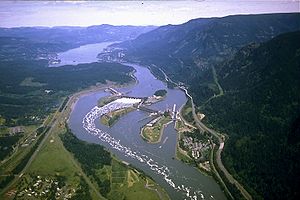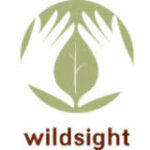Dump not, lest ye be invaded!
As if last year’s Spotted knapweed and Common tansy infestations all over the place weren’t enough for local homeowners and gardeners to tend with, Jenn Vogel of the Central Kootenay Invasive Plant Committee (CKIPC) did a presentation at Monday night’s council meeting where she identified a few more invasive species Rosslanders need to be aware of because of their nasty noxiousness.
Tops on Vogel’s list of pesky plants is Japanese or Giant knotweed. Currently, there is an infestation of this plant around the RDKB building in the Gulch, and there are four infestations around Rossland. Looking a lot like bamboo, (in fact, it’s sometimes called “false bamboo” or “American bamboo”) this is no panda food, people!
“[Giant Knotweed] has some huge issues when it comes to infrastructure,” Vogel stated in her presentation. “This plant has the ability to grow right through ashphalt, it can grow right through water piping, it can grow through foundations, so as a city it’s a big concern.”
In fact, knotweed was purposely planted as hedgerows in the early 19th century in the UK but now it’s a pariah and it’s been classified as a “controlled waste.” The UK’s Environmental Protection Act says Japanese knotweed, “must be disposed of safely at a licensed landfill site according to the Environmental Protection Act (Duty of Care) Regulations 1991. Soil containing rhizome material can be regarded as contaminated and, if taken off a site, must be disposed of at a suitably licensed landfill site and buried to a depth of at least 5 metres.”
The Act goes on to say that, “Japanese knotweed plant material and/or any knotweed contaminated soil which you discard, intend to discard or are required to discharge is likely to be classified as controlled waste.” There is a detailed rigmarole for disposing of this weed.
Vogel said in her presentation that the UK spends about $2.5 million dollars a year dealing with Japanese knotweed. There are incidences of homeowners not having mortgages approved if this weed is found on site.
Vogel reported, “It would be to the detriment of the city if it started growing through infrastructure, especially because our infrastructure is a little bit older and might not be as strong as newer cities.”
“This plant only dies if you spray it,” says Vogel. “And it isn’t a spray herbicide,” she clarified, “it’s an injected herbicide. What you do is cut [the weed] down to the ground…to the first node, and you’re using a big gun that has a needle on it and you inject directly into the plant so no other plant is affected, only the knotweed. There is a 90% reduction in knotweed in the first year.” The cost runs approximately $500 per 300 stems.
If you think it sounds like something out of a horror film, you’re not the only one. Imagine my terror when I discovered I live across the street from three gigantic infestations on Fourth Avenue!
One thing that helps many infestations of invasive weeds stay put is to not do any illegal dumping of yard waste – for instance along the old Cascade Highway (you know who you are). Vogel recently found another noxious weed, Policeman’s Helmet, at two illegal dump sites along that particular road.
“We have a bit of a problem up there,” says Vogel. “We’ve found three knotweed sites and two Policeman’s Helmet sites because people are dumping their waste over the bank. We’ve put up no dumping signs to try to stop that, but it’s an educational issue.”
Policeman’s Helmet decimates wetlands, and there is currently a problem with it in a wetland area in Trail. It grows into a mat or carpet-like covering and nothing else is able to grow around it. This creates great concern for wetland wildlife and ecology. But if the CKIPC is finding it dumped along the Cascade Highway, it very likely means that some people in Rossland have it in their yards, and this is probably how the knotweed got there, too, since it doesn’t easily spread via its seeds.
Other wicked weeds we need to be aware of in Rossland are Scotch Broom, which is highly flammable due to its natural oils, but there aren’t any infestations in town at the moment. Also, Yellow flag iris is a potential problem because of how destructive it is to wetlands, and Giant hogweed, which is harmful to human health.
According to BC’s Ministry of Agriculture web site, Giant hogweed’s “blister like pustules on stems and stalks exude a clear watery sap that sensitizes skin to ultraviolet radiation. Affected areas are subject to severe burns that usually result in blistering and painful dermatitis. Blisters often result in purplish to blackened scars…Giant hogweed’s tenacious and invasive nature allows it to readily occupy and crowd out native vegetation. In riparian areas it forms a dense canopy, out-competing native species and causing streambank erosion.”
Right now, the only known infestations of Gian hogsweed are in Hills and there is some potential in other spots of the Slocan.
The CKIPC is currently working on a public education campaign that will involve signage and brochures. Right now, the committee encourages everyone to visit their web site to familiarize themselves with local invasive weeds and some simple techniques to minimize spreading, and if you think you have an imminent invasion of invasive plants, there is a hotline you can use to report your sightings: (250) 352-1160.


























